What’s the Difference Between Marijuana and CBD?
Marijuana, hemp, CBD, THC — with so many terms, the world of cannabis can quickly become confusing. Today, we’ll be breaking down the differences between the terms marijuana and CBD. While often talked about as if polar opposites, that’s not quite the right way to see things. Let’s take a look at their definitions, plus those of related terms.
Differentiating Between Hemp and Marijuana
While we’re looking at the differences between the terms marijuana and CBD, the first differentiation to make is actually between hemp and marijuana. Hemp and marijuana both refer to cannabis plants. You may have heard that hemp and marijuana are distinctly different plants, but that’s actually not true! Both hemp and marijuana are just different names for cannabis, and part of the flowering Cannabaceae family.
The law differentiates between the two based on the cannabinoids found in both — more on what cannabinoids are below — with an emphasis on THC content. Hemp is naturally very low in THC, while marijuana is naturally very high in it. In addition to a focus on cannabinoids, strains of cannabis are frequently mentioned, categorized loosely into sativas and indicas. These categories have been debunked from a gene perspective; there’s actually very little consistency when it comes to placing a strain in its correct family. Even more interestingly, hemp is more genetically similar to indicas, while marijuana is more similar to sativas.
The overall takeaway? Hemp and marijuana are the same plant, and strains from each generally share a large pool of genetic information. While many have tried to differentiate types of flower via colloquial groups, categorizing them by anything other than THC content is largely impossible.
What’s a Cannabinoid?
Above, we mentioned cannabinoids. Cannabinoids are a category of compounds found in any form of cannabis. All plants have distinct compounds that give them their properties, and cannabinoids are those for cannabis plants. The most popular cannabinoids are THC and CBD, both of which are the two highest in abundance respectively.
Differentiating Between CBD and THC
CBD is short for cannabidiol, while THC is short for tetrahydrocannabinol. These cannabinoids have similar effects on the human body with one key difference: CBD affects cannabinoid receptors indirectly, while THC affects them by binding directly. This is why THC can get you high, and CBD cannot.
How Do Marijuana and CBD Affect You?
So now, to answer the question: what’s the difference between marijuana and CBD? Marijuana is a term for the cannabis plant, often associated with high THC content. CBD is a cannabinoid, found in both hemp and marijuana cannabis plants, and does not produce psychoactive effects.
While categories may be easily confused, the best way to look at any categorization of cannabis is by examining its effects on you. Regardless of its name, analyze the contents of a cannabis product to first determine if something will get you high. Products always list their percentages of both THC and CBD.
While it’s believed that marijuanas labeled as sativas are more uplifting and indicas are more sedative, it’s neither the CBD nor THC that will determine that, but actually, the other chemicals found in cannabis plants, including flavonoids, terpenes, and otherwise. To truly understand the effects of a specific product, you’ll likely have to ask a budtender or an experienced cannabis user about the effects they felt.
Visit the Cannabis Experts at The Kind Center
At The Kind Center, we only sell products that we would take ourselves — so regardless of its classification, you know it’s good! Our experienced budtenders have tried many cannabis products, and we’re always happy to help clarify cannabis basics. Shop our huge variety of cannabis options online, or stop by in-store today to see our edibles, flower, and more. If you visit in-store, we can recommend a product with the appropriate amount of THC and CBD that fits your needs!
